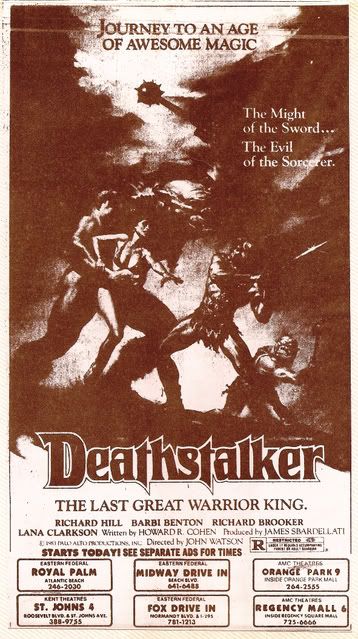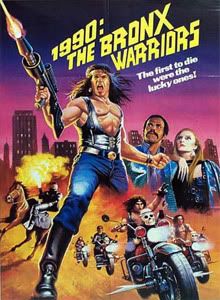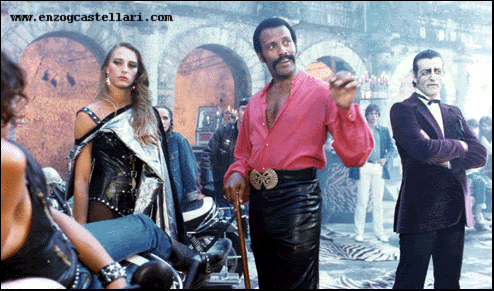
FILM: GUN DEALERS AND GANGS COME TO KILL IN 'KILLPOINT'
Philadelphia Inquirer, The (PA) - March 12, 1984
Author: Rick Lyman, Inquirer Movie Critic
The wonder is that people who go to see crud like Killpoint ever go see a movie again. It's not just that there's absolutely nothing to recommend it, but that watching the thing is such a tedious experience.
The newspaper and television ads make Killpoint sound like an urban- thriller showcase for Richard (Shaft) Roundtree. What's the use of beating around the bush? That's a lie. Roundtree's hardly in it.
The real star is a galumphing lump of martial-arts senescence named Leo Fong. He plays Lt. Jim Long, hard-bitten mainstay of the Riverside, Calif., detective squad.
Cameron Mitchell plays Joe Marx, a Palm Springs arms dealer whose agents knock over an armory and get away with dozens of supersophisticated automatic weapons. Marx's assistant is a big, humorless guy named Nighthawk (Stack Pierce), who also answers to just Hawk. He doesn't like anybody.
I'm going out on a limb describing the plot - because the way the movie's edited you can't really tell what it is - but for some reason Marx decides to sell these automatic weapons to gangs of Riverside street punks. The punks use them to rob grocery stores, stick up gas stations and settle gang vendettas.
There are three or four scenes of guys with automatic rifles barreling into a room and letting rip while glass shatters and people go flying. The special effects are of the crummiest variety - a shot of the guy shooting his gun cutting to a shot of the victim screaming, throwing up his arms and hurling
himself over a table.
You couldn't fool an idiot with effects like that.
The real mystery is why the people behind this movie decided to make Leo Fong its star. He can't act. His lines are, on the average, about three words long, and he seems to have an enormous amount of trouble remembering them. For a martial-arts star, he doesn't seem limber. If Richard Roundtree is the marquee draw, why not make him the star of the movie? Give him something to do besides bark into a telephone.
This is, by my count, at least the third movie in the last year that has claimed to have Roundtree as its star. In each case, he appeared for a couple of scenes and then disappeared. What's going on with him? Does he charge by the hour?
This is not to imply that lack of Roundtree is Killpoint's only problem. The only purpose of the movie's dialogue is to repeat plot points, give you another chance to see how stupid everything is. It's not that the people who made this film do a lousy job of building character; they don't even try. Same with the camera work - some of the lighting is so bad that it can't be blamed on mere ineptness. They don't seem to have even been trying.
One more thing: I saw the movie Friday afternoon at the Duke & Duchess Theater at 1605 Chestnut St. For some reason, perhaps the previous evening's snowfall, the ceiling was leaking bucketfuls of water into the theater at about mid-aisle.
Nobody mentioned on the way in that the matinee included a water show; really, the noise of the water gushing onto the drenched, stinky carpet was so loud that it was hard to hear some of the lines.
It was quite a scene - three-dozen people sitting in a damp, smelly theater watching a terrible movie while water literally was pouring out of the ceiling, crashing to the floor and rushing toward the screen.
KILLPOINT
Produced by Frank Harris and Diane Stevenett, written and directed by Frank Harris, photography by Frank Harris, music by Daryll Stevenett, and distributed by Crown International Pictures; running time: 1 hour, 31 minutes. *
Lt. Long - Leo Fong
Joe Marx - Cameron Mitchell
Nighthawk - Stack Pierce
Anita - Hope Holiday
Candy - Diana Leigh
Agent Bryant - Richard Roundtree
Parents' guide: R (violence, profanity)




















